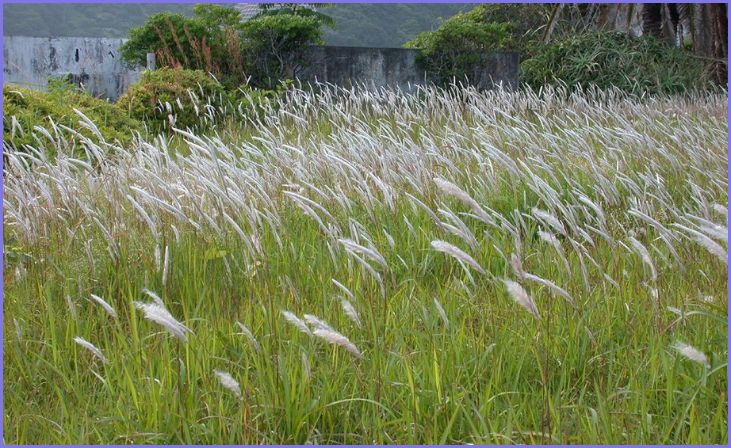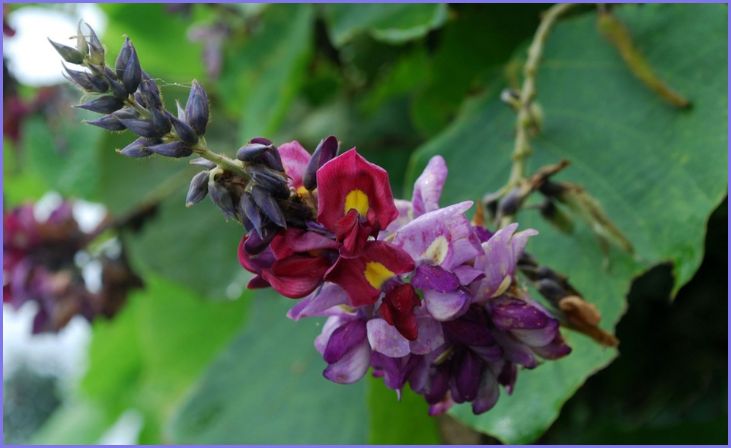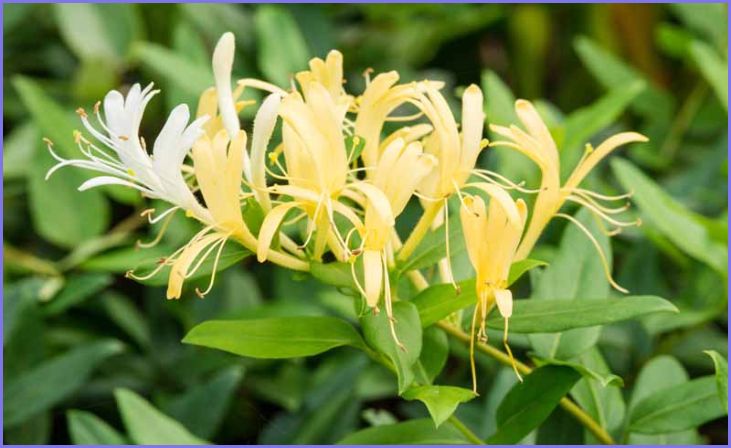Invasive Species in North Carolina – Invasive species pose a significant threat to North Carolina’s ecosystems, jeopardizing native biodiversity and disrupting ecological balance. Defined by their ability to thrive in non-native environments, these species, whether plants or animals, often outcompete indigenous counterparts, leading to habitat degradation and economic ramifications.
This overview aims to shed light on prevalent invasive species in North Carolina, examining their ecological and economic impacts. By exploring introduction pathways and current management strategies, this discussion seeks to raise awareness about the urgency of addressing this issue.
Recognizing the importance of public involvement, coordinated efforts, and proactive policies, the state can work towards safeguarding its natural resources and fostering sustainable coexistence between native and invasive species.
Invasive Species in North Carolina
Cogongrass (Imperata cylindrica)

Cogongrass (Imperata cylindrica) is an invasive grass species in North Carolina known for its aggressive growth. Originating from Asia, it displaces native vegetation, forming dense monocultures that disrupt natural ecosystems. Its rapid spread poses a threat to biodiversity and alters ecosystem dynamics.
Cogongrass is resilient, thriving in various soil types and climates, making it challenging to control. The invasive grass negatively impacts ecosystems, reducing the overall health and productivity of affected areas. Efforts to manage and mitigate its impact involve strategies to prevent its further spread and the restoration of native vegetation in affected regions.
Hydrilla (Hydrilla verticillata)
Hydrilla (Hydrilla verticillata), an aquatic invasive plant in North Carolina, forms dense mats on freshwater surfaces, impeding water flow and outcompeting native aquatic vegetation. Originating from Asia, it spreads rapidly, posing a threat to lakes and rivers. Its aggressive growth can negatively impact water quality, recreational activities, and native aquatic ecosystems.
Hydrilla’s ability to survive in a variety of conditions makes it challenging to control. Management efforts involve mechanical removal, herbicide treatments, and public awareness to prevent its further spread. Monitoring and control measures are crucial to minimize the ecological and economic consequences of Hydrilla infestations in water bodies.
Also, Read – Best July Travel Destinations in America
Chinese Privet (Ligustrum sinense)
Chinese Privet (Ligustrum sinense) is an invasive shrub in North Carolina, forming dense thickets that displace native vegetation. Originating from East Asia, it has spread widely, particularly in the southeastern United States.
Its rapid growth and prolific seed production contribute to its invasive nature. Chinese Privet negatively impacts biodiversity by reducing the abundance of native plants and disrupting natural ecosystems. Its presence can alter soil chemistry and negatively affect wildlife habitats.
Effective management strategies involve removal and control efforts to restore native vegetation and mitigate the ecological impact of this invasive shrub. Public awareness and prevention measures are essential to curb its further spread.
Zebra Mussel (Dreissena polymorpha)
The Zebra Mussel (Dreissena polymorpha) is an invasive freshwater mussel that has made its presence known in North Carolina. Originally from Eurasia, it poses a significant threat to aquatic ecosystems.
With a high reproductive rate, these small mussels colonize rapidly, attaching themselves to surfaces and clogging water intake pipes. Zebra mussels alter nutrient cycling, outcompete native mussel species, and impact water quality.
Their economic impact includes damage to infrastructure and water-related industries. Management efforts involve monitoring, implementing control measures, and public education to prevent the spread of these invasive mussels to new water bodies. Vigilance is crucial to mitigate their ecological and economic repercussions.
Kudzu (Pueraria montana var. lobata)

Kudzu (Pueraria montana var. lobata), often dubbed “the vine that ate the South,” is an invasive species in North Carolina. Originating from Asia, it’s characterized by rapid growth and climbing habits. This invasive vine blankets landscapes, smothering and shading out native vegetation. Its aggressive nature contributes to soil erosion and alters natural habitats.
Kudzu poses a threat to biodiversity by displacing native plants and disrupting ecosystems. Efforts to control its spread involve mechanical removal, herbicide treatments, and biological control methods. The challenge lies in preventing its further encroachment and mitigating its ecological impact on the diverse landscapes it invades. Public awareness plays a crucial role in managing the spread of this invasive plant.
Emerald Ash Borer (Agrilus planipennis)
The Emerald Ash Borer (Agrilus planipennis) is an invasive beetle wreaking havoc in North Carolina. Originating from Asia, it inflicts substantial damage to ash trees. The larvae tunnel beneath the bark, disrupting nutrient and water transport, ultimately causing tree mortality.
This invasive species poses a significant threat to the state’s ash tree population, impacting both natural and urban environments. Infestations are challenging to manage, often requiring the removal and destruction of affected trees.
Efforts focus on monitoring, early detection, and implementing strategies to curb the spread of the Emerald Ash Borer, aiming to preserve the ecological and economic value of ash trees in the region.
Also, Read – Destinations You Can Never Visit
Nuttall’s Waterweed (Elodea nuttallii)
Nuttall’s Waterweed (Elodea nuttallii) is an invasive aquatic plant in North Carolina, originating from North America. This submerged perennial poses a threat to freshwater habitats, forming dense mats that impede water flow and crowd out native aquatic vegetation.
Its rapid growth disrupts ecosystems, reducing light availability for other aquatic plants and altering nutrient dynamics. Nuttall’s Waterweed negatively impacts water quality and can hinder recreational activities.
Effective management involves control measures such as herbicide applications and manual removal. Preventing its spread to new water bodies is crucial, requiring public awareness and adherence to guidelines to mitigate the ecological consequences of this invasive aquatic plant.
Brown Marmorated Stink Bug (Halyomorpha halys)
The Brown Marmorated Stink Bug (Halyomorpha halys) is an invasive insect causing agricultural and nuisance problems in North Carolina. Originating from Asia, it feeds on a variety of crops, including fruits and vegetables, impacting agricultural yields.
Additionally, the stink bug seeks shelter in homes, becoming a household nuisance. Its rapid spread and broad diet make it a challenging pest to control. Integrated pest management strategies involve the use of insecticides, biological controls, and public education on preventative measures.
Monitoring efforts are critical to understand and mitigate the economic and ecological impact of the Brown Marmorated Stink Bug in the region.
Giant Hogweed (Heracleum mantegazzianum)
Giant Hogweed (Heracleum mantegazzianum) is an invasive plant in North Carolina, originating from Eurasia. Known for its towering height and large, umbrella-like flower clusters, it poses a threat due to its potential health impacts.
Contact with its sap can cause severe skin irritation and, when exposed to sunlight, result in phytophotodermatitis, leading to painful burns and blistering. Its invasive nature and harmful effects on human health make Giant Hogweed a concern.
Control measures involve eradication to prevent its spread, coupled with public awareness campaigns to ensure individuals can identify and avoid contact with this invasive plant.
Japanese Honeysuckle (Lonicera japonica)

Japanese Honeysuckle (Lonicera japonica) is an invasive vine in North Carolina, originally from East Asia. Widely spread, it forms dense thickets, smothering native vegetation and disrupting natural ecosystems. Known for its rapid growth and fragrant flowers, this invasive species outcompetes native plants for sunlight and nutrients.
Japanese Honeysuckle negatively impacts biodiversity by reducing the abundance of native flora and altering wildlife habitats. Despite its ornamental appeal, it poses ecological challenges. Management efforts include mechanical removal, herbicide treatments, and promoting the growth of native plants. Public awareness about its invasiveness and the importance of using alternative, non-invasive plant species in landscaping is essential for curbing its spread.
Conclusion
In conclusion, mitigating the impact of invasive species in North Carolina requires a concerted effort. As we navigate the complexities of ecological balance, community engagement, and evolving threats, proactive measures and collaborative strategies are imperative. By learning from successful initiatives, raising public awareness, and advocating for robust policies, we can safeguard the state’s diverse ecosystems.
The battle against invasive species is ongoing, but with continued dedication, North Carolina can cultivate resilience, protect its natural heritage, and ensure a sustainable future for both its environment and communities.
FAQs
Invasive species in North Carolina pose threats to native biodiversity, disrupt ecosystems, and can lead to economic losses in agriculture and infrastructure.
Examples include Kudzu, Japanese Honeysuckle, and Chinese Privet, which outcompete native plants and alter natural habitats.
Spread mechanisms include natural pathways like wind and water dispersal, as well as human-mediated pathways such as transportation of goods and the pet trade.







